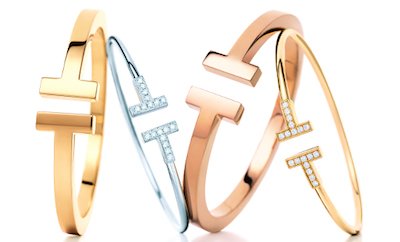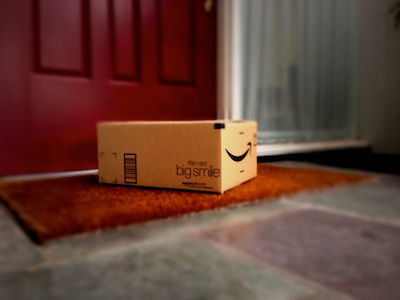Ecommerce giant Amazon’s counterfeit problem is only getting worse, as the company’s efforts to curtail fakes fall short.
Tightly distributed luxury brands tend to avoid Amazon as a selling platform to keep their positioning in tact, but many end up having a presence on the marketplace whether they want to or not, as counterfeiters sell goods using their name. While Amazon does have a counterfeit policy, the general feeling is that the company could be doing more to protect brands and consumers from illegal copycats.
“Amazon is a trusted marketplace with a sound reputation,” said Rania Sedhom, managing partner at Sedhom Law Group, Pllc., New York. “The average consumer will not likely suspect that an item is counterfeit, particularly when fakes sold on Amazon are usually discounted by 10-15 percent.
“Even savvy, frugal and experienced shoppers know that a 10-15 percent discount is viable,” she said. “Several luxury brands permit those types of discounts during sale periods at department stores, via online resellers, at sample sales and discount merchants such as Century 21.
“Luxury counterfeiting, at a minimum, dilutes a brand and takes a brand from bespoke to omnipresent. For luxury brands, its heritage, workmanship and limited quantities are sacred. Counterfeiters are taking luxury brands from luxury to ubiquitous.”
Prime target
Ahead of the sales event Prime Day on July 12, Amazon’s stock price soared to a record $745.81.

Promotional image for Amazon’s Prime Day
Amazon, which had revenues of $107 billion in 2015, has grown exponentially since its start in 1994, turning into a massive marketplace with more than 2 million sellers.
Among the legitimate merchants are those hawking counterfeit goods.
A search within Amazon for Cartier turns up knockoff versions of the brand’s Love Bracelet. While the real deal retails for $5,700 and up, the fakes are being sold for about $30.
Similarly, looking up Tiffany brings up a listing for a fake T Collection cuff.
“Estimates vary widely, but there is no doubt that unauthorized third-party merchant listings of ‘grey market’ and/or counterfeit goods (often manufactured in the Far East and then re-sold on Amazon) is costing luxury brands billions of dollars annually in lost sales and in terms of tarnishing and diluting the brand image,” said Brian Igel, founding partner at Bellizio + Igel Pllc., New York.
Despite Amazon’s efforts to attract luxury fashion labels, the online retailer’s official distribution rates sit at 16 percent, according to a report from L2.
Luxury brands are very protective of their image, including retail, and they now have more options to turn to for ecommerce, whether their own direct-operated online stores or third party online retailers that specialize in fashion. If Amazon wants to woo more luxury brands, it will need to clean up its image (see story).
According to a report from CNBC, the marketplace has been doing the opposite. It has sought out Chinese manufacturers, frequent culprits in the counterfeit game, who produce goods for a fraction of the price and then sell for a bargain.
The marketplace even registered with the Federal Maritime Commission to make it easier for Chinese companies to ship to Amazon’s warehouses in the United States.
The combination of producing a large percentage of products and lax government regulation makes China particular susceptible to counterfeiters looking to copy luxury items and sell them at a cheaper price (see story).
Because Amazon is a marketplace, it is not under any legal obligation to prevent counterfeit merchandise from being marketed on its site. It is only responsible for responding to complaints.
Amazon does have a counterfeit policy in place, which says to merchants, “If you sell counterfeit goods, we may immediately suspend or terminate your selling privileges and destroy inventory in our fulfillment centers without reimbursement.” While the company has taken action against fraudulent sellers who are identified by consumers, the process turns into a game of whack-a-mole, where problem merchants turn up again with a new account.
“As a consumer of Amazon, part of the magic is being able to find almost anything, comparison shop and obtain the product almost immediately, at least for Amazon prime members,” Ms. Sedhom said.
“When Amazon does little to nothing to protect consumers against counterfeits, they lose trust, and eventually market share,” she said. “When Amazon allows sellers to use Amazon fulfillment centers to get products to customers, Amazon is essentially vouching for that merchant.
“Some of the things Amazon can do are allow buyers to rate the seller, not simply the product; provide more information about the seller such as location and time as an Amazon merchant; and pay attention to reviews. When several Amazon customers’ review suspect an item is fake, take action. Surely, there is an algorithm for such a thing that Amazon can utilize.”
Fighting back
While some fakes are easy to spot, others pass more easily for the real thing. Alibaba Group’s Jack Ma went so far as to say that counterfeit merchandise is often better than the original.
The group’s membership in the International AntiCounterfeiting Coalition was looked at skeptically by other members, who thought it was not doing enough to combat counterfeits.
Before it lost its membership, Alibaba formed an alliance with the IACC for a MarketSafe Expansion Program. This program recognizes that the marketplace or any one brand cannot tackle the problem of counterfeiting alone, allowing brands to work with Alibaba to remove listings that are fraudulent.
While Alibaba is quick to discuss counterfeits in a public forum, Amazon is quieter about the problem.
Taking a note out of Alibaba’s stance, brands should take matters into their own hands.
“If a company sees a counterfeit item, purchase something from the seller and follow the trail,” Ms. Sedhom said. “Contact Amazon and your attorney and take swift action against the seller. There is no room for apathy here.”
Almost a quarter of online shoppers have been duped into buying counterfeit goods, according to a recent report by MarkMonitor.
A third of shopping is done online, with that number rising toward two-fifths during the holiday season, and the numbers are projected to accelerate upward in the coming years. As the growth of online shopping coincides with increased access to 3D printing, brands will have to take measures to cut down on counterfeit distribution channels (see story).
Education is part of the key for luxury brands. Those that do not sell on Amazon should tell consumers that, directing them to legitimate channels.
“Although luxury brands often restrict direct selling on sites like Amazon, unauthorized third-party listings are nearly impossible to prevent,” Mr. Igel said.
“Many luxury brands employ teams of lawyers and other professionals to monitor and police online retail marketplaces like Amazon, but they need a willing partner to effectively deal with the problem,” he said. “So luxury brands have to do a better job applying pressure on companies like Amazon, both publicly and privately.
“Lawsuits is one way. Kering, which owns Gucci, Saint Laurent Paris and other luxury brands, recently sued Amazon’s chief competitor, Alibaba, alleging violations of trademark and racketeering laws. Specifically, the lawsuit alleged that Alibaba had conspired to sell and traffic in counterfeit products bearing their trademarks without permission.
“Social media ‘shaming’ has proved to be a cheap and reasonably effective way to combat fast-fashion copycatting, and could be similarly utilized by luxury brands and their brand evangelists to shine a light on the problem of unauthorized goods being sold on Amazon and other online marketplaces.
“Luxury brands also need to do a better job on consumer education. What should consumers look for to make sure they are getting an authentic product? What are the telltale signs that a listing is fake?
“Finally, luxury brands must do a better job of utilizing technology, such smart/RFID tags to make authentication of goods easier.”
from
http://redirect.viglink.com?u=http%3A%2F%2Fredirect.viglink.com%2F%3Fu%3Dhttps%253A%252F%252Fwww.luxurydaily.com%252Famazons-counterfeit-problem-exacerbated-by-chinese-manufacturers%252F%26key%3Dddaed8f51db7bb1330a6f6de768a69b8&key=ddaed8f51db7bb1330a6f6de768a69b8



No comments:
Post a Comment